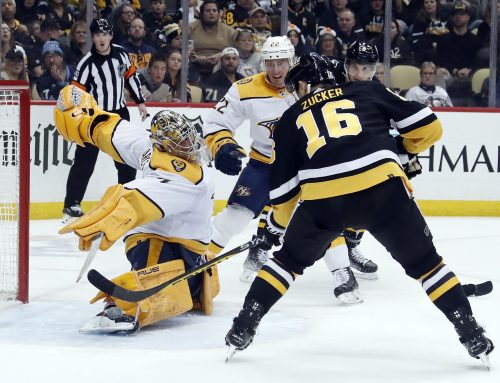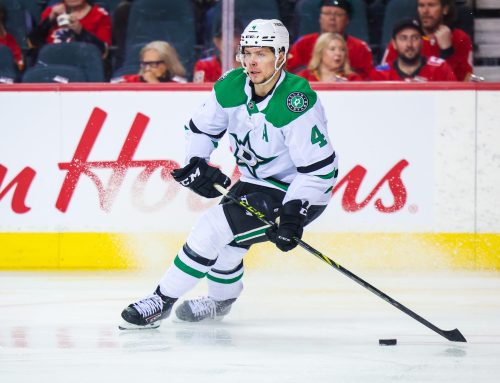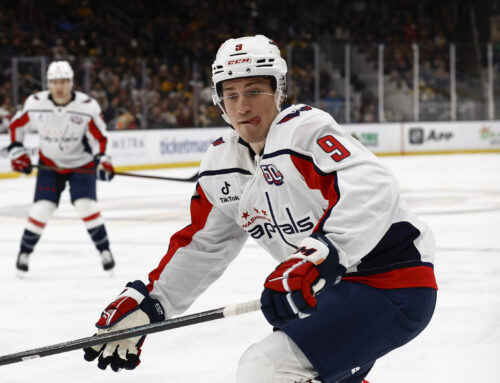With the trade deadline behind us, and not much left to be done in most cap leagues other than sit back, watch, and cheer for our players, some managers are already prepping for next season. With that, I have had some readers asking me about fresh drafts that they are planning on completing over the offseason for a new cap league.
When going into a fresh draft, be it for a dynasty, or just a partial keeper, drafting the best team is the goal. However, managing the cap for future seasons should also come into play, and that takes a little more fineness. The goal of this week's article is to give a few players to look at in each of the early, middle, and late rounds of your drafts, and go over a few things to consider salary wise. As always, league settings will play a large role in determining draft value, whether it be positionally, or production based, so be sure to do your own research well in advance of the draft.
****
Early Rounds
Generally, the best bang for your buck will be players on their entry level deals like Andrei Svechnikov and Cale Makar, however the top players on their entry level deals are all up for big raises next year, and as a result, their value isn't all that much higher than the top producers such as Nathan MacKinnon and Leon Draisaitl. Top tier talent is a lot harder to find than anything else later on in the draft, so finding the sweet spot between stars and bargains that is appropriate for your league settings is key.
Some players in the early rounds that you may want to try your best to get your hands on would include the four names listed above, as well as these players that you may be able to value draft:
Sidney Crosby – This doesn't seem like it should be a surprise name here, but in many drafts, he will drop farther than he should because he is paid more than $8 million, and he is over 30. Neither is a large worry due to his excellent production, and the fact that with his talent, the age isn't an issue for at least another few years. As a result, on a contract similar to Draisaitl's, you can have production at nearly the same pace, while using a slightly later pick to do so.
Sean Couturier – One of the most underappreciated cap bargains around the league, Couturier is even more valuable in real life due to his all-around solid play, though the value still translates to the fantasy game. Only two players on standard contracts have more points with a lower cap hit than Couturier (David Perron and Roman Josi – whose bargain contract expires this summer).
Nick Suzuki – In my initial look at flipping my cap rankings towards numbers for next year, Suzuki is a bit of an unexpected name among the top 30 (he's actually in the top 15), though looking into the numbers it shouldn't be surprising at all. After putting up 40 points through his first 68 games thus into his rookie season, Suzuki will be looking to build on that for his sophomore campaign and has two years remaining on his entry-level deal. Once the youngsters like Jack Hughes, Alex Lafrenière, and Elias Pettersson are off the board, Suzuki should be soon to follow.
Conor Garland – Garland was one of the best cap bargains last year, however he was severely underrated outside of cap leagues (and sometimes even there). He has one year left at almost the league minimum salary, and even after that he won't be immediately paid according to his production value because he doesn't have the name value or the pedigree. This shouldn't be a top-30 selection, but getting him anywhere after 50th overall in a cap league (without too many peripherals) would represent excellent value.
Right now, MacKinnon should be the first overall in just about any cap league though, as he has the full combination of elite production at 24, bargain contract with term, and a situation that involves all-star line mates. I have time to listen to arguments for a few other players, but this isn't something I would have to think long about if faced with that decision.
****
Middle Rounds
I'm going to assume that the "middle rounds" we can classify as somewhere in the 150 range, as 12 team leagues will be at their 12-13 round picks by then, while 24+ team leagues will at minimum have their starting five rounded out.
By these middle rounds, the top star players will be gone, as will all of the great value contracts. Now we look to find the second tier of bargain contracts, the players yet to break out, and the ones either set to rebound from injury or slump.
Erik Gustafsson – This is a tough one without knowing what his future cap hit will be, however with the disappointing year after he put up 60 points the year before, he will either end up with a low "prove-it" contract, or he will take a middling longer-term deal with a team that thinks they can make it work for him. Either way, Gustafsson will be able to choose his own situation for next year and should be given a great opportunity to succeed (read: lots of power-play time). Getting a bargain on an offensive defenceman in the middle of the draft can provide some excellent value.
Frank Vatrano – Vatrano checks a few value boxes for this area, having a value contract of less than $2.5 million for the next two seasons after this one, and has some breakout potential. Vatrano hit his breakout threshold last season but was still too far down a top-heavy depth chart to really shine this season. His production rose a little in the third quarter, but added ice time, especially with the top unit, will be the catalyst Vatrano needs to really put up better numbers next season. With Evgeni Dadonov and Mike Hoffman looking ready to test the free agent market, there should be room for Vatrano to push his way up the lineup next year.
Oliver Bjorkstrand/Pavel Buchnevich – I used to mix these two players up all the time because of similar last names, similar high potentials, and the tendencies to be stuck down the lineup. This year, both wingers started to play up the lineup with a bit more regularity, but injuries and inconsistent ice time has covered up what has been an extremely effective season from both players. Bjorkstrand put up a point per game over his last 30 games before he was hurt, while Buchnevich has been at nearly a point per game pace since seeing a season high 24:18 of ice time on January 21st. Both can be 65+ point wingers next season, though expect to need to use a slightly higher pick for the higher upside of Bjorkstrand.
****
Late Rounds
The late rounds in cap league drafts will have a lot of variance, as what is left at this point really depends on the league settings (scoring, depth, and cap), as well as the tendencies of the group. In some leagues, there will be some bigger name players left because their cost was too high to be sure it could be justified in an earlier round, while in others, this will be where every pick is spent on filler players with low cap hits, praying for them to even slightly exceed expectations.
Mike Matheson – If you have a bit of cap room left to round out your defence, then Mike Matheson would be a great player to take a chance on. His breakout to a 40+ point defenceman is coming, now whether that is next year, or the year after, we won't know until it happens. In the meantime, Matheson has paced for 30-point seasons the last two years, and despite a few games at forward this year due to some poor roster management in Florida, Matheson's numbers should continue to improve with greater ice time in the coming years.
Jesse Puljujarvi/Kirill Kaprizov/Nikita Gusev – While others run the prospect well dry, or grab 40-point wingers, diving into the pool of European players with lower floors but higher ceilings will give your team some added upside. All three of these players have some question marks, but any of them could put up 60 points next year, and no one should be overly surprised about it. Kaprizov's stock will soar as soon as it is confirmed that he will join the NHL (it's up in the air at the moment).
Ilya Mikheyev – I discussed Mikheyev's contract situation in an earlier article, but the bottom line is that we don't have much to go on for a future contract, and as a result he will probably see a smaller, shorter term deal. It does seem that when he returns to the Toronto lineup, there will be a top-nine forward slot waiting for him, likely alongside John Tavares or Alex Kerfoot. He has the upside to put up close to 70 points in a season if everything was to fall right, but at minimum should be able to score in the 30 to 40-point range next season (assuming he is fully healthy). This is the kind of mid-range floor, and high-ceiling pick that can really help shore up the back end of your draft.
****
All salary info courtesy of capfriendly, statistics are all pulled from FrozenTools.
If you have questions, comments, or article requests, you can find me on Twitter @alexdmaclean.
****
Previous Capped articles:





 EDM
EDM FLA
FLA CHI
CHI ANA
ANA CGY
CGY N.J
N.J
